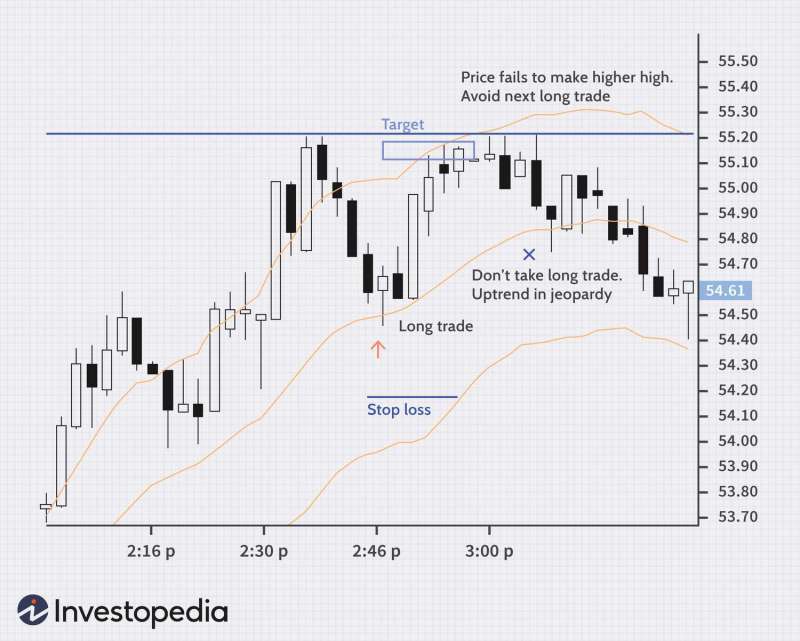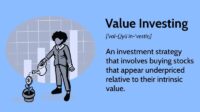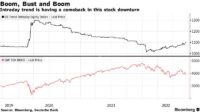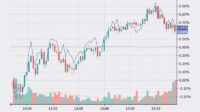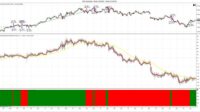Stock Market Volatility Tips – Volatility is a statistical measure of the dispersion of returns on a particular stock or market index. In most cases, the higher the volatility, the riskier the security. Volatility is often measured by the standard deviation or the difference between the returns of the same stock or market index.
Volatility in stock markets is often associated with large swings in both directions. For example, if the stock market rises for a long period of time and then falls by more than one percent, it is called a volatile market. Volatility of an asset is a key factor in options pricing contracts.
Stock Market Volatility Tips

Volatility often refers to the amount of uncertainty or risk associated with the amount of change in a security’s value. High volatility means that a stock’s value can spread over a wide range of values. This means that stock prices can swing wildly in any direction in a short period of time. Low volatility means that the value of a security will not fluctuate dramatically and will be more stable.
The Ups And Downs Of Stock Market Price Volatility
One way to measure the volatility of an asset is to quantify the daily return (daily percentage change) of the asset. Historical volatility is based on historical prices and represents the degree of volatility of an asset’s return. This number is unitless and expressed as a percentage.
While variance usually reflects the spread of returns around an asset’s average, volatility is a measure of variance limited to a specific time period. So we can report daily volatility, weekly, monthly or yearly volatility. Therefore, it is useful to consider the variability as the annual standard deviation.
Variability is often calculated using the variance and the standard deviation (the standard deviation is the square root of the variance). Since volatility describes changes over a period of time, you simply take the standard deviation and multiply it by the square root of the number of periods under consideration:
For simplicity’s sake, let’s assume that we have a monthly closing price of a stock ranging from $1 to $10. For example, the first month is $1, the second month is $2, and so on. Follow the five steps below to calculate the variance.
Chart Explains Why The May Stock Market Drop Not Like December Selling
In this case, the resulting difference is $8.25. The square root is taken to get the standard deviation. That’s $2.87. It is a measure of risk and shows how the values are spread over the average price. This gives traders an idea of how much the price may deviate from the average.
If the values are randomly selected from a normal distribution, approximately 68% of all data values are within one standard deviation. 95% of the data values are within two standard deviations (2 x 2.87 in our example) and 99.7% of all values are within three standard deviations (3 x 2.87).
In this case, values between $1 and $10 are not randomly distributed along a bell curve; vice versa. they are evenly distributed. Therefore, the expected percentages of 68%–95%º–99.7% are not achieved. Despite this limitation, traders often use the standard deviation because the price return data set often resembles a normal (bell curve) distribution more closely than the given example.

Stock price volatility is considered to be mean-reverting, meaning that periods of high volatility often occur around the mean and periods of low volatility around the long-term average.
Worrying About Stock Market Volatility? Here Are 4 Tips From Multi Billionaire Investor Ray Dalio
Implied volatility (IV), also known as implied volatility, is one of the most important indicators for option traders. As the name suggests, this allows them to gauge how volatile the market will be. This concept gives traders a way to calculate probability. It should be noted that it cannot be considered a science, so it does not predict how the market will behave in the future.
Unlike historical volatility, implied volatility is derived from the price of the option and represents expectations of future volatility. That said, traders cannot use past performance as an indicator of future performance. Instead, they should evaluate the options available in the market.
Historical volatility (HV), also known as statistical volatility, measures the volatility of an underlying stock by measuring price changes over a predetermined time period. This is a rare indicator compared to implied volatility because it does not refer to the future.
Stock prices also fluctuate more than usual when there is an increase in historical volatility. At this point, there is hope that something will change or change. If historical volatility is down, on the other hand, that means any uncertainty has been removed, so things will go back to where they were before.
Volatility: Meaning In Finance And How It Works With Stocks
This calculation can be based on daily changes, but often measures movements based on the change from one closing price to the next. Historical volatility can be measured between 10 and 180 trading days, depending on the intended duration of the option trade.
Volatility is a key variable in option pricing models that estimates how much the underlying asset’s return will change between now and the option’s expiration date. In option pricing formulas, volatility expressed as a percentage is derived from daily trading activity. How volatility is measured affects the value of the coefficient used.
Volatility is also used to value option contracts using models such as Black-Scholes or binomial tree models. More volatile underlying assets translate into higher option premiums because options with higher volatility are more likely to be in the money at expiration. Option traders try to predict the future volatility of an asset, so the option price in the market reflects its expected volatility.

One measure of a particular stock’s volatility relative to the market is its beta (β). Beta approximates the total volatility of a stock’s return to that of the relevant benchmark (usually the S&P 500 is used). For example, a stock with a beta of 1.1 has historically moved 110% for every 100% move in its price-based benchmark.
How Did New And Experienced Investors Deal With Market Volatility In 2020?
In contrast, a stock with a beta of .9 has historically changed 90% for every 100% move in the underlying index.
Market volatility can also be seen through the volatility index (VIX), which is a quantitative measure of broad market volatility. The VIX is created by the Chicago Board Options Exchange as a measure of the expected 30-day volatility of the US stock market based on real-time quoted prices of S&P 500 options. It is an effective indicator by which investors and traders make future bets on the direction of markets or individual stocks. A high reading in the VIX indicates a riskier market.
Traders can also trade the VIX through various options and exchange-traded products, or they can use VIX values to price certain derivatives.
Investors can find periods of high volatility unsettling because prices can suddenly change or fall. Long-term investors are advised to ignore short-term periods of volatility and stay the course. This is due to the upward trend of stock markets in the long term. Additionally, emotions such as fear and greed that thrive in volatile markets can derail your long-term strategy. Some investors can use volatility as an opportunity to add to their portfolio by buying on the dip when prices are relatively cheap.
How To Calculate Volatility Of A Stock Or Index In Excel
You can also use hedging strategies to manage volatility, such as buying hedges to limit downside losses without selling any stocks. But remember that put options are also more expensive when volatility is high.
Suppose an investor is building a pension portfolio. As he retires in the next few years, he will look for stocks with low volatility and steady income. It covers two companies:
A conservative investor may choose ABC Corporation for their portfolio because of its low volatility and short-term predictable value.

Variability is a statistical measure of the distribution of data around a mean value over a period of time. It is calculated as the standard deviation multiplied by the square root of the number of time periods, T. In finance, it represents the variance of market prices on an annual basis.
Influence Of Global Events On The Stock Market
Volatility is often used to describe risk, but this is not always the case. Risk involves the possibility of loss, while volatility describes how big and fast prices move. If the increase in price increases the probability of loss, the risk also increases.
Whether volatility is a good thing or a bad thing depends on what kind of trader you are and your risk appetite. Volatility can be a problem for long-term investors, but for day traders and options traders, volatility often equates to trading opportunities.
VIX is the CBOE Volatility Index, a measure of short-term volatility in the broader market as measured by the implied volatility of 30-day S&P 500 options contracts. The VIX typically rises when stocks fall and falls when stocks rise. Also known as the “fear index,” the VIX can be a measure of market sentiment, with higher values indicating greater volatility and greater fear among investors.
Volatility is how quickly and how quickly prices change over a period of time. in the stock market,
It’s Been A Wild Ride For The Stock Market. What’s Next?
Reasons for stock market volatility, volatility stock market definition, historical stock market volatility, stock market volatility today, 2016 stock market volatility, us stock market volatility, stock market volatility index, what is stock market volatility, stock market volatility pdf, stock market volatility chart, current stock market volatility, stock market volatility.
